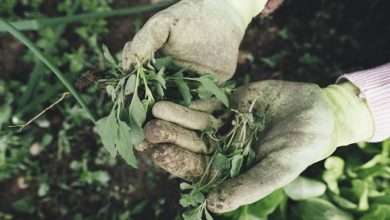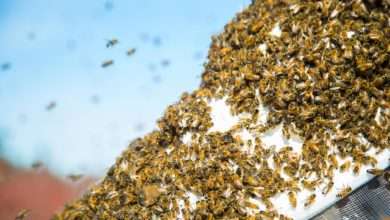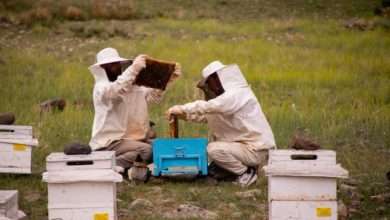When to Replace a Honeybee Queen

Beekeeping is a fascinating hobby, but it can be tricky to know when and how to replace a honeybee queen. The queen bee is a critical part of a healthy hive. Without her, the hive will begin to struggle and eventually become unproductive. In this guide, you’ll learn the signs that indicate the need for a new queen bee, tips on choosing the best replacement queen, and how to safely introduce her to the hive.
What is a Queen Bee?
A queen bee is a specially modified female bee, the largest and longest-lived bee in the hive. Her job is to lay eggs—up to 2,000 daily during peak season—producing up to 50% of the total bee population in the hive. She is the mother of the colony and the vital link in the hive’s success.
The Importance of the Queen Bee in a Honeybee Colony
In a honeybee colony, the queen bee is the most important member. She is responsible for laying eggs to produce new bee workers, drones, and future queens. A queen bee has a lifespan of up to five years, but beekeepers usually replace her after two to three years to ensure a healthy and productive colony.
Factors Affecting Queen Bee Replacement
Several factors can affect the replacement of the queen bee, including:
- Age: As mentioned earlier, a queen bee can live up to five years. However, her productivity declines after two to three years, and the colony may become weaker and less productive.
- Genetics: The queen bee’s genetics are vital to a strong and healthy colony. If the queen bee is not of good quality, the colony may not thrive. Beekeepers choose their queen bees based on their genetics, such as their resistance to diseases and pests, longevity, and productivity.
- Swarm prevention: A swarm is when a portion of the honeybee colony leaves with the old queen to form a new colony. Beekeepers want to prevent swarms from happening as it reduces the productivity of the original colony. One way to prevent swarming is to replace the queen bee before she starts laying queen cells, which can produce new queens.
The Queen Bee’s Role in the Colony
The queen bee is responsible for the survival and growth of the honeybee colony. Without a queen bee, the colony would eventually die out.
Here are the essential roles that a queen bee plays in a honeybee colony:
- Egg production: The queen bee is responsible for laying eggs, which produces new worker bees, drones, and future queens. The number of eggs that a queen bee lays depends on the season, climate, and the colony’s needs.
- Pheromone production: The queen bee produces pheromones that regulate the colony’s behavior and social structure. These pheromones communicate information about the queen’s health, reproductive status, and the overall colony’s health. Without the queen bee’s pheromones, the colony can become disorganized and lack direction.
- Mating: The queen bee mate’s only once with several drones to produce new generations. The quality of the queen bee’s mating can affect her genetics, which, in turn, affects the colony’s productivity and health.
Signs that it’s Time to Replace a Queen Bee
Queen bees are the central figure in a bee colony, responsible for laying eggs, managing the hive, and ensuring the survival of its members. However, like any other organism, queen bees have a lifespan, and their performance can dwindle as they age. In this chapter, we’ll discuss the signs that indicate it’s time to replace a queen bee.
- Declining Egg Laying Activity
Queen bees are responsible for laying a large number of eggs every day. A decline in egg-laying activity is often the first sign that your queen bee’s performance is slipping. If you notice that the queen bee is laying fewer eggs than usual, or the number of eggs she’s laying is inconsistent from day to day, it may be time to replace her.
- Older Queen Bee
A queen bee’s lifespan can vary, but on average, it’s around two to three years. As they age, their egg-laying ability declines, and they become more susceptible to disease and other health issues. If your queen bee is two to three years old or older, it’s time to start considering a replacement.
- Aggressive Behavior Towards Their Colony Members
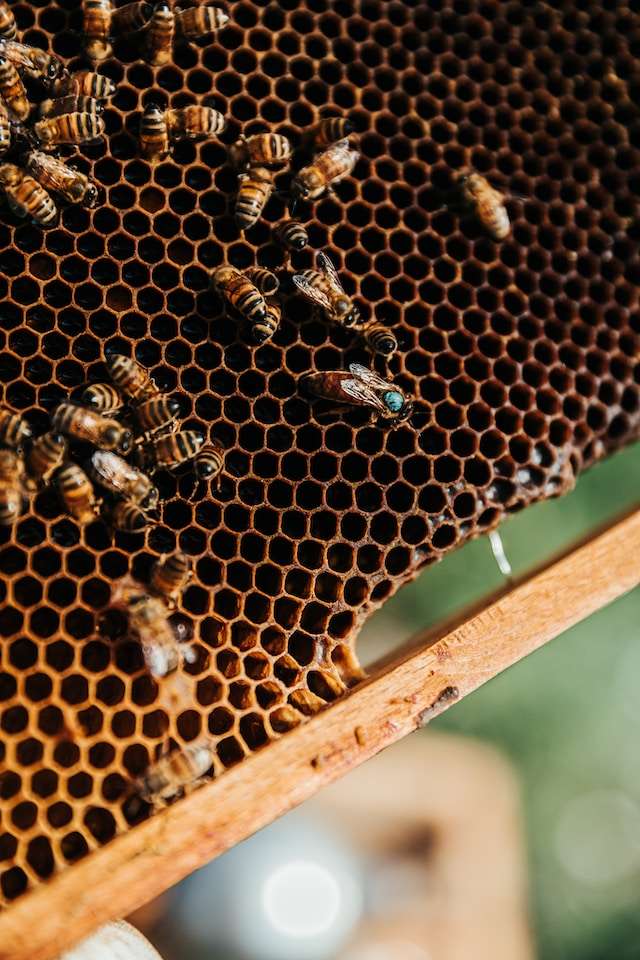
A queen bee’s job is to manage and provide for her colony, so if she’s exhibiting aggressive behavior towards her colony members, something is amiss. If the queen bee is attacking her workers, it could be a sign that she’s not receiving the proper nutrition or that her pheromones are lacking. This behavior is not only detrimental to the colony – if it persists, it can also put the queen bee’s health at risk.
- Presence of a Large Number of Drones in the Colony
Drones are male bees, whose primary purpose is to mate with the queen bee. If your colony has an excessive number of drones – male bees that are not necessary for the survival or productivity of the hive – it could be a sign that the queen bee is not functioning at optimum levels. Drones require a lot of resources, including pollen and nectar, which could be better utilized by the worker bees to produce honey and care for the brood.
- Poor Brood Pattern
The brood pattern describes how the eggs are laid in the comb. A healthy brood pattern should have a consistent pattern of eggs, with each cell being filled uniformly. If the brood pattern appears spotty, with cells appearing to be skipped or left unfilled, it could indicate that the queen bee’s egg-laying ability is diminishing.
Methods of Replacing a Queen Bee
There are times when beekeepers must replace the queen to ensure the health and longevity of the colony. Here ares some methods of replacing a queen bee.
- Natural Queen Replacement
Natural queen replacement is the most common method used by honeybee colonies. The colony senses that the queen’s viability is declining or that it is time to replace her. When this happens, the colony produces a new queen by selecting one of the existing worker larvae and feeding it royal jelly. The larva then develops into a queen bee, and the old queen leaves the colony, taking a portion of the bees with her in a swarm.
- Artificial Queen Introduction
In artificial queen introduction, the beekeeper removes the existing queen from the colony and replaces her with a new queen. This method is most commonly used when the old queen is not producing enough eggs or is not producing high-quality brood. The new queen is introduced to the colony in a queen cage, which is suspended from one of the frames in the hive. Over time, the bees in the colony become accustomed to the queen’s pheromones, and once the queen is released from the cage, she is accepted as the colony’s new queen.
- Queen Cell Introduction
Queen cell introduction is another method of replacing a queen bee. This method involves the removal of the old queen and the placement of new queen cells into the colony. The queen cells are produced by the bees in the colony and contain larvae that have been selected to become queens. The queen cells are placed in the colony, and the bees are left to hatch the queens and select the new queen that will lead the colony.
Factors to Consider When Replacing a Queen Bee
Replacing the queen bee is a common process in beekeeping. Queen bees are essential to the survival and productivity of bee colonies. If a queen bee is weak, sick, or unproductive, it is vital to replace her with a new one. However, the process of replacing the queen bee requires careful consideration, as it can have a significant impact on the colony’s health and productivity. In this chapter, we will discuss the critical factors to consider when replacing a queen bee.
- Timing of Queen Replacement
The timing of queen replacement is crucial. One of the best times to replace the queen bee is in the early spring when the colony begins to grow rapidly. Replacing the queen during this time ensures that the colony has a strong queen to lay eggs during the peak season. However, it is essential to avoid replacing the queen during periods of nectar dearth or when the colony is weak.
- Selection of a New Queen Bee
The selection of a new queen bee is another essential factor to consider. It is crucial to choose a queen bee that is bred for strong disease resistance, enhanced productivity, and gentle temperament. When selecting a new queen bee, one should look for reputable breeders that produce high-quality queen bees. It is also essential to choose a queen bee that matches the existing genetics of the colony.
- Genetics of the New Queen Bee
The genetics of the new queen bee are crucial to ensure the colony’s productivity and disease resistance. The queen bee should be selected based on her genetic characteristics, which determine her ability to produce strong offspring. The genetic traits to consider include temperament, productivity, disease resistance, and the ability to survive in local conditions. It is essential to choose a queen bee that carries desirable traits that match those of the colony.
- Health Status of the New Queen Bee
The health status of the new queen bee is vital to the colony’s survival. It is essential to choose a queen bee that is healthy, free of diseases, and parasites. A queen bee with strong health can produce healthy offspring that will keep the colony strong and productive. Hence, it is essential to buy queen bees from reputable sources that test and guarantee the health of their queens.
Conclusion
Knowing when and how to replace a honeybee queen is essential for any beekeeper. The queen is an integral part of a healthy, productive bee hive. When a queen is no longer productive, it’s important to replace her as soon as possible in order to ensure the health and productivity of the hive. To find the right replacement queen, purchase your queens from a reliable beekeeping supplier and familiarize yourself with the bee’s genetics and temperament. When introducing a new queen to the hive, make sure to carefully remove the old one and install the new one in a queen cage in the center of the hive. With the right techniques and knowledge, you can keep your hive healthy, productive, and thriving.
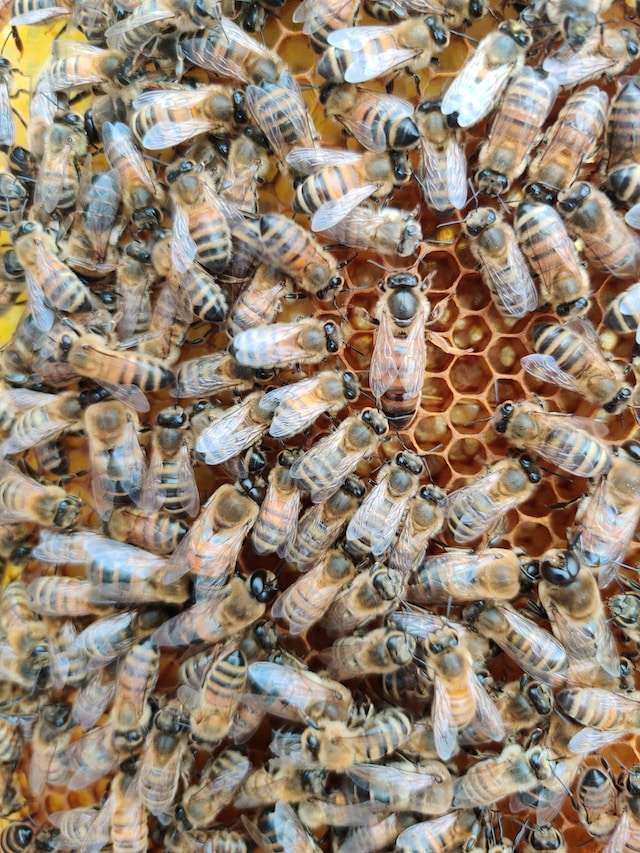
FAQ
What are the signs that a honeybee queen needs to be replaced?
- Some signs include a decline in colony population, decreased honey production, erratic brood patterns, and aggression among worker bees.
How often should a honeybee queen be replaced?
- Typically, honeybee queens should be replaced every one to two years, or when the signs of decline are observed.
How does the process of replacing a honeybee queen work?
- The process involves introducing a new queen to the colony and allowing the worker bees to gradually accept her as their new leader.
What is the best time of year to replace a honeybee queen?
- Generally, the best time to replace a honeybee queen is in the spring, when the colony is preparing to expand and build new comb.
How do I know if the new queen I’ve received is of high quality?
- Look for queens that are mated with drones from a variety of colonies, as this will increase the genetic diversity of your hive.
Will replacing the queen affect the personality of my hive?
- Yes, replacing the queen can have an impact on the temperament of your hive. Choosing a queen that matches the desired temperament of your hive is important.
Can I use a queen from a different species of honeybee to replace my queen?
- No, it’s important to only use queens of the same species as the existing colony to avoid conflicts and disruptions to the hive.
What happens if I don’t replace my honeybee queen when she needs to be replaced?
- Failing to replace a honeybee queen can lead to a decline in colony health and the eventual collapse of the hive.
How can I ensure that my new queen is accepted by the colony?
- Gradual introduction, along with proper feeding and shelter, can increase the chances of the new queen being accepted by the colony.

